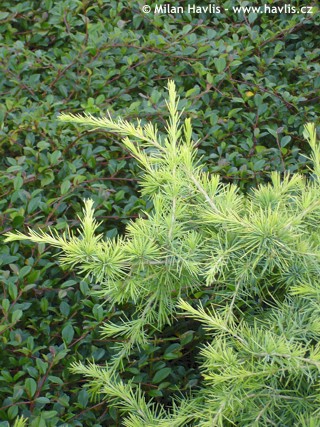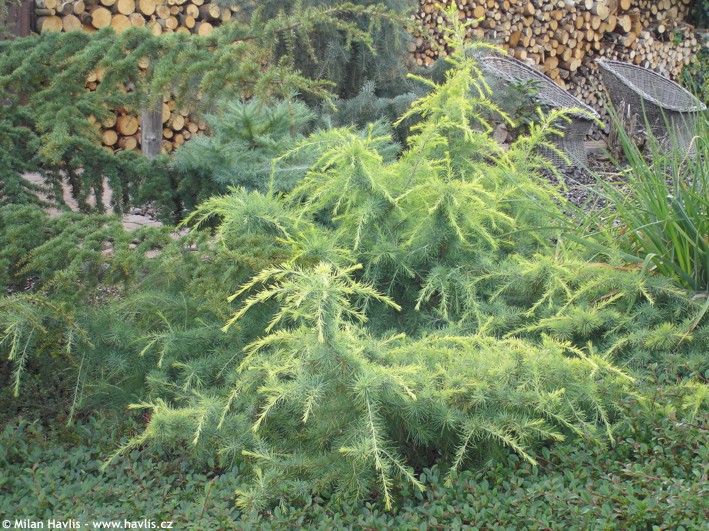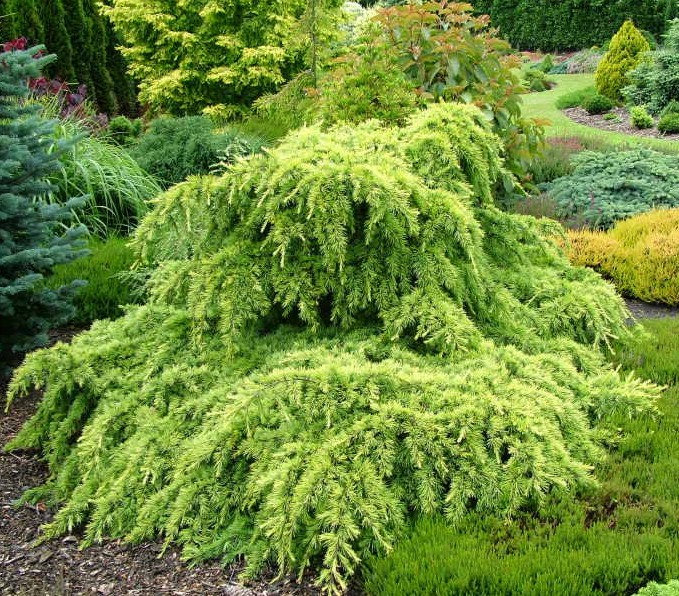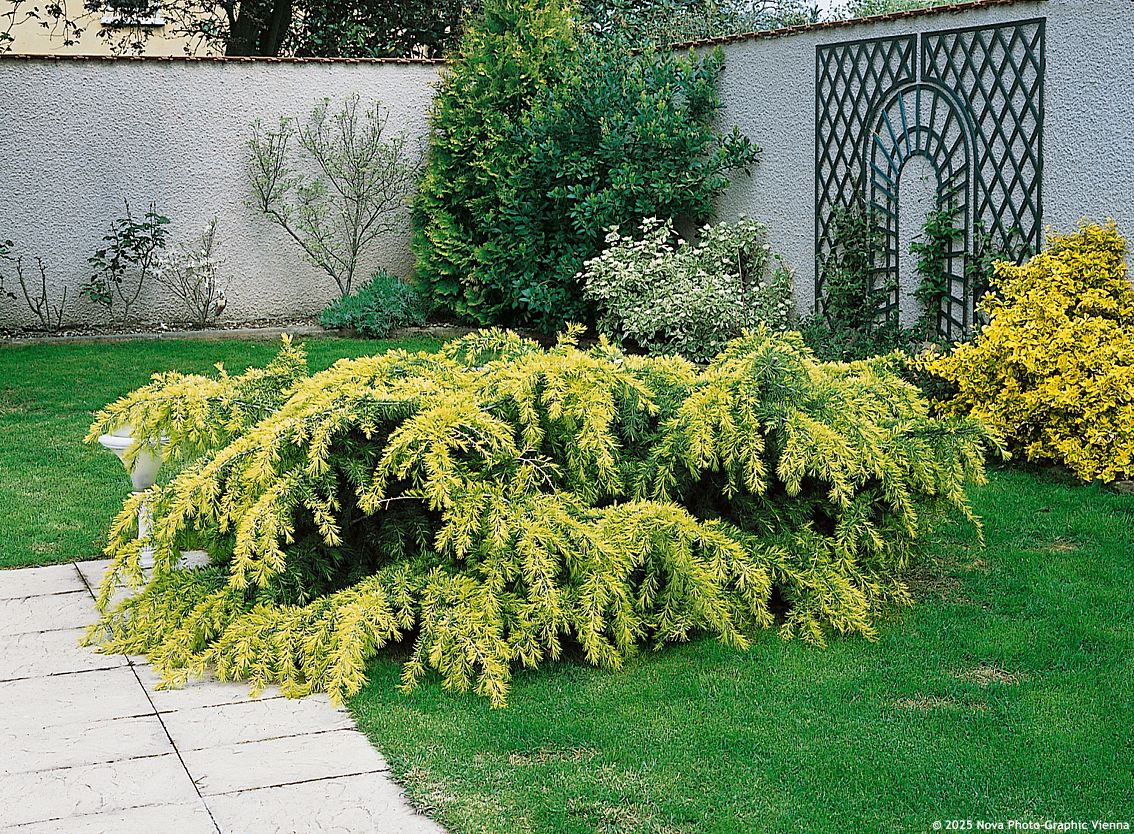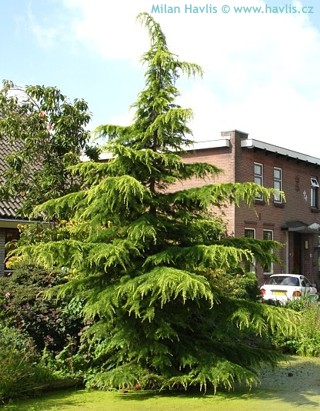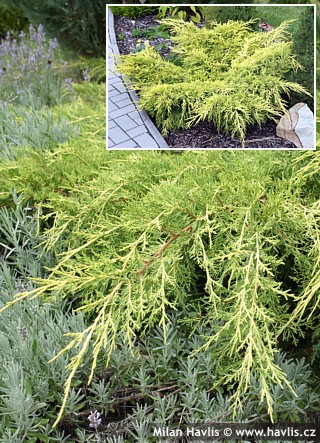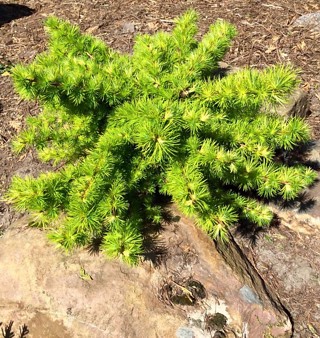Cedrus deodara 'GOLDEN HORIZON' Himalayan cedar


Cedrus
Cedars are majestic trees that captivate us with their irregular habit, especially in the southern states below the Alps. The Himalayan cedar is probably the most graceful species of cedar, and its name refers to its origin – the Himalayas, where it grows at altitudes of up to about 2000 m asl, but in the temperate zone, it can be found up to 3500 m asl. It is a long-lived tree that commonly reaches around 50 meters in height in the wild, and there are also forests with trees reaching 65 meters in height. Among Hindus, it is worshipped as a divine tree, and it is the national tree of Pakistan. It has existed on Earth for thousands of years, but it first arrived in Europe in the form of seeds in England in 1838. Soon after, it became clear how much the seed origin affects its hardiness, so from 1850 onwards, breeders focused on selecting more resilient varieties originating from higher altitudes. The species is cultivated in large parks and manors with vast space, whereas in common gardens, varieties of smaller stature, different habits, and sometimes interesting colors are grown.However, you can't fool the genes, and after several years you will spot an upright branch which no longer wants to be horizontal and begins to grow vertically towards the sun. In other words, the original Aurea genes woke up and want to take over and grow taller. No worries there, you can simply prevent this by removing the upright branch, and it will take the shrub several more years to attempt such a mischief again. But keep an eye on it, because it's worth the little effort once every few years to maintain a low and truly very beautiful cedar with fresh needle colour in your garden. You can prune and shape it any way from spring through autumn.
Cedars are not difficult to grow. They thrive in any well-drained soil and well-established trees even tolerate short-term temporary waterlogging. They also cope with calcareous soil. They make new growths two or even three times throughout the vegetative season, so their oldest needles fall off continuously – this is natural, not a disease. The Himalayan cedar is generally recommended for sites protected from freezing winds, but we have found that it is unnecessary once the wood is mature in zone 6. Verified hardiness is down to -27 °C. (USDA zone 5b).
Last update 15-01-2009; 27-01-2025
Goods are shipped all over Europe. For Russia and U.K. and for further details please read about SHIPPING OPTIONS HERE.
Are you interested in a serious discount for orders NOV-FEB? Check your options here.
THE PRICES INCLUDE VAT of 15%. For quick conversion you can use 1 CZK = approx. 0.04 EUR
- STANDARD QUALITY - Plants of this group are 1st class quality with number of branches and overall density adequate to their size and age, considering they were container grown.
- DE LUXE QUALITY - This label guarantees a luxurious quality of manually selected plants that, compared to their height and age, are exceptionally dense and beautiful.
- EXTRA - These plants are usually mature and bigger specimens with exceptional overall appearance.
- STANDARD (as described in the plant form) means a tree with a trunk of 190-210 cm and a crown at the top, unless specified differently. The commercial size for trees is their girth measured in the height of 1m from ground.
- HOBBY - These plants are of the same quality as our standard-quality plants but younger and therefore cheaper.
- SHRUB - a woody plant with branches growing bushy from the ground level.
- HALF-STANDARD or MINI-STANDARD - a small tree with shorter trunk, its size is usually specified.
- FEATHERED - These are trees with branches growing already from the base of the trunk and up along the stem.
- GRASSES and PERENNIALS - Sizes given usually read the diameter of the pot or the clump, as specified.












